Efficient Plastid Transformation in Arabidopsis
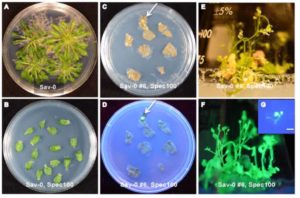 The plastid genome of higher plants encodes about 100 genes, the products of which assemble with approximately 3,000 nucleus-encoded proteins to form the plastid transcription and translation machinery and carry out complex metabolic functions, including photosynthesis and fatty acid and amino acid biosynthesis. Plastid transformation is routine only in tobacco (Nicotiana tabacum), although reproducible protocols for plastid transformation have also been described in several other crop species. Arabidopsis, the most widely used model plant, is one of the species that is recalcitrant to plastid transformation. Spectinomycin, the selection agent commonly used for transplastomic events, binds to the 16S rRNA, blocking translation on the prokaryotic type 70S plastid ribosomes and inhibiting greening and shoot regeneration in tissue culture cells. When the plastid genome is transformed with the aadA gene encoding aminoglycoside-3’’-adenylyltransferase (AAD), the AAD protein modifies the antibiotic such that it no longer binds to the 16S rRNA and translation proceeds, enabling greening (and selection for plastidal transformation). Seeds of most Arabidopsis accessions germinate on spectinomycin and develop into small albino seedlings or rosettes. A recent study, however, has revealed that null mutations in ACC2, encoding a plastid-targeted acetyl-CoA-carboxylase (ACCase), cause hypersensitivity to spectinomycin. Yu et al. () hypothesized that the ACC2 gene produces homomeric ACCase that is imported into plastids and, in tissue culture, partially duplicates the function of heteromeric ACCase, one subunit of which is encoded in the plastid accD gene. When plastid translation is blocked by spectinomycin, no heteromeric ACCase is made, and the homomeric enzyme enables a limited amount of fatty acid biosynthesis to occur, thereby reducing the impact of the absence of heteromeric enzyme in culture, making spectinomycin selection inefficient. The authors now report that the efficiency of plastid transformation in acc2 mutants is increased approximately 100-fold in Arabidopsis and comparable to that of tobacco, confirming their hypothesis. The recognition that the duplicated ACCase in Arabidopsis is an impediment to plastid transformation suggests a starting point for implementing plastid transformation in other recalcitrant crops.
The plastid genome of higher plants encodes about 100 genes, the products of which assemble with approximately 3,000 nucleus-encoded proteins to form the plastid transcription and translation machinery and carry out complex metabolic functions, including photosynthesis and fatty acid and amino acid biosynthesis. Plastid transformation is routine only in tobacco (Nicotiana tabacum), although reproducible protocols for plastid transformation have also been described in several other crop species. Arabidopsis, the most widely used model plant, is one of the species that is recalcitrant to plastid transformation. Spectinomycin, the selection agent commonly used for transplastomic events, binds to the 16S rRNA, blocking translation on the prokaryotic type 70S plastid ribosomes and inhibiting greening and shoot regeneration in tissue culture cells. When the plastid genome is transformed with the aadA gene encoding aminoglycoside-3’’-adenylyltransferase (AAD), the AAD protein modifies the antibiotic such that it no longer binds to the 16S rRNA and translation proceeds, enabling greening (and selection for plastidal transformation). Seeds of most Arabidopsis accessions germinate on spectinomycin and develop into small albino seedlings or rosettes. A recent study, however, has revealed that null mutations in ACC2, encoding a plastid-targeted acetyl-CoA-carboxylase (ACCase), cause hypersensitivity to spectinomycin. Yu et al. () hypothesized that the ACC2 gene produces homomeric ACCase that is imported into plastids and, in tissue culture, partially duplicates the function of heteromeric ACCase, one subunit of which is encoded in the plastid accD gene. When plastid translation is blocked by spectinomycin, no heteromeric ACCase is made, and the homomeric enzyme enables a limited amount of fatty acid biosynthesis to occur, thereby reducing the impact of the absence of heteromeric enzyme in culture, making spectinomycin selection inefficient. The authors now report that the efficiency of plastid transformation in acc2 mutants is increased approximately 100-fold in Arabidopsis and comparable to that of tobacco, confirming their hypothesis. The recognition that the duplicated ACCase in Arabidopsis is an impediment to plastid transformation suggests a starting point for implementing plastid transformation in other recalcitrant crops.


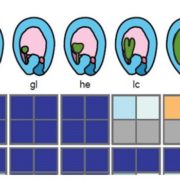
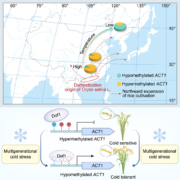
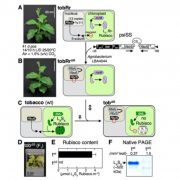

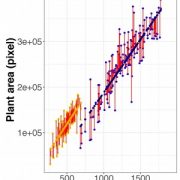
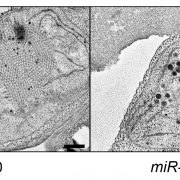


Leave a Reply
Want to join the discussion?Feel free to contribute!